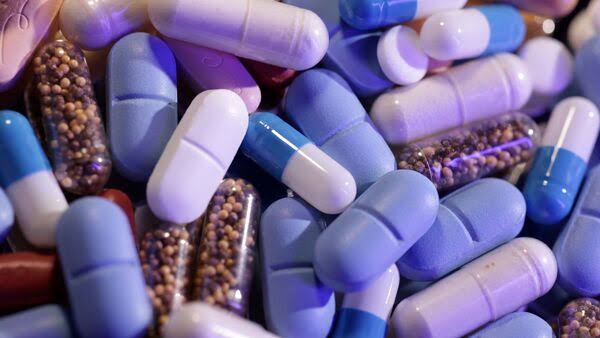Add your promotional text...
India's Pharmaceutical Export Surge: A Global Market Leader in the Making"
Synopsis: India's pharmaceutical exports are witnessing strong growth, with a notable increase of 8.36% in July 2024 alone. This blog explores how India's cost-effective generic medicines have cemented the country as a global pharmaceutical leader, expanding into new markets and maintaining high compliance standards. With ongoing regulatory enhancements and support from government initiatives, India's pharmaceutical industry is poised for significant future growth, reinforcing its role as the "pharmacy of the world."
INVESTMENT IDEAS
By Runjhun Tripathi
8/16/20243 min read


India’s Pharmaceutical Exports: A Growing Force in the Global Market
India’s pharmaceutical industry continues to be a global leader, with the country’s drugs and pharmaceuticals exports showing consistent growth. In July 2024, these exports increased by 8.36%, reaching $2.31 billion. This growth is part of a broader trend, as India’s cost-effective generic medicines continue to gain traction in advanced Western countries.
Steady Growth in Exports:
In the fiscal year 2023-2024, India’s drugs and pharmaceuticals exports grew by 9.67% year-on-year, totaling $27.9 billion. This upward trend has persisted into the current financial year, reflecting the increasing global demand for India’s high-quality, affordable medicines. The United States remains the largest market for Indian pharmaceutical exports, accounting for over 31% of the total, followed by the United Kingdom and the Netherlands, each contributing around 3%.
Expanding Global Reach:
India’s pharmaceutical sector has been expanding its footprint beyond traditional markets. Countries like Brazil and South Africa have long been significant importers of Indian pharmaceuticals, but now, nations such as Ireland and Sweden have also become key markets for these exports. This diversification underscores the global appeal and reliability of Indian pharmaceutical products.
Economic Impact and Global Standing:
According to the latest Economic Survey, India’s pharmaceutical export share increased to 6.4% in FY24, up from 5.8% in FY19. The export value rose from $19.1 billion in FY19 to $27.9 billion in FY24, highlighting the sector’s robust growth. The survey further notes that India’s pharmaceutical market is currently valued at $50 billion, making it the third-largest in the world by volume. India is often referred to as the “pharmacy of the world,” offering approximately 60,000 generic brands across 60 therapeutic categories and contributing 20% to global generic drug exports. Notably, eight of the top 20 global generic companies are based in India, further solidifying the country’s position as a pharmaceutical powerhouse.
Future Projections:
The future of India’s pharmaceutical industry looks promising, with projections indicating that the market could reach $65 billion by 2024 and an impressive $130 billion by 2030. This anticipated growth is driven by the industry’s continued innovation, expansion into new markets, and adherence to high compliance standards.
High Compliance Standards:
India’s pharmaceutical industry is known for maintaining rigorous compliance standards. The country boasts 703 facilities approved by the United States Food and Drug Administration (US FDA), 386 European Good Manufacturing Practice (GMP)-compliant plants, and 241 World Health Organization Good Manufacturing Practice (WHO-GMP)-approved plants. These certifications are a testament to the industry’s commitment to quality and safety.
Regulatory Enhancements:
In December 2023, India introduced revised manufacturing rules under Schedule-M, aimed at aligning domestic production with global standards and enhancing quality control. These changes are expected to further boost the credibility and competitiveness of Indian pharmaceutical products on the international stage.
Impact of the Production Linked Incentive (PLI) Scheme:
The PLI scheme for medical devices has also played a crucial role in the sector’s growth. It has helped narrow the gap between imports and exports, enabling domestic production of advanced medical devices such as computed tomography (CT) scan machines and magnetic resonance imaging (MRI) machines. Furthermore, the PLI scheme for bulk drugs has approved 48 projects, with a committed investment of Rs 3,938.6 crore, to strengthen local manufacturing capabilities.
Support for Exporters:
Financial assistance through the Pharmaceuticals Export Promotion Council of India (Pharmexcil) is also available under the Market Development Assistance and Market Access Initiative Schemes. These programs provide support to exporters of pharmaceutical products, particularly small and medium-sized enterprises, helping them promote their products in various international markets.
In conclusion, India’s pharmaceutical industry is not only a vital component of the global healthcare landscape but also a significant contributor to the country’s economic growth. With its expanding global reach, adherence to stringent quality standards, and supportive government initiatives, the industry is well-positioned to continue its upward trajectory. As the market evolves, India’s role as the “pharmacy of the world” is set to become even more prominent, driving both economic and social benefits on a global scale.
